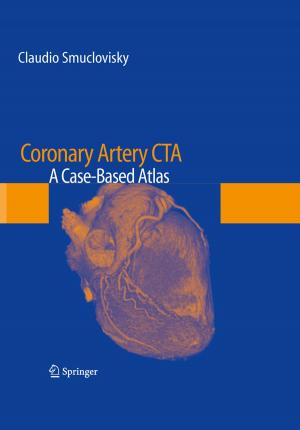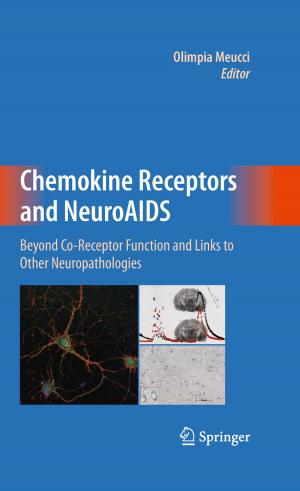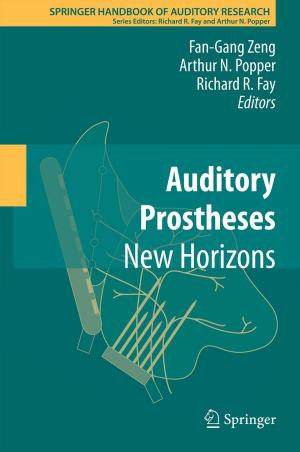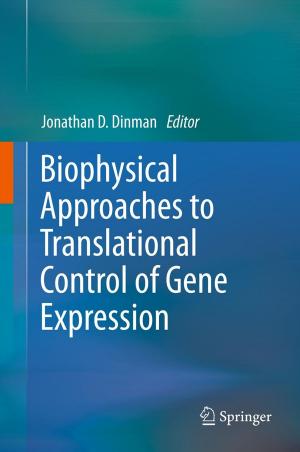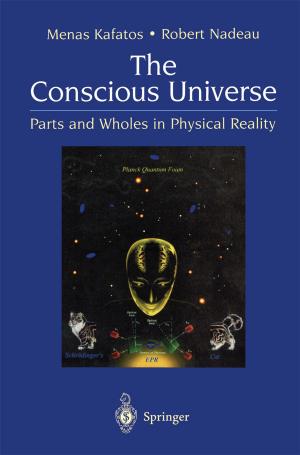Molecular and Cellular Mechanisms of Antibody Activity
Nonfiction, Health & Well Being, Medical, Medical Science, Microbiology, Immunology| Author: | ISBN: | 9781461471073 | |
| Publisher: | Springer New York | Publication: | May 22, 2013 |
| Imprint: | Springer | Language: | English |
| Author: | |
| ISBN: | 9781461471073 |
| Publisher: | Springer New York |
| Publication: | May 22, 2013 |
| Imprint: | Springer |
| Language: | English |
This book focuses on the function of antibodies in vivo. Recent years have seen an exponential growth in knowledge about the molecular and cellular mechanisms of antibody activity. These new results dramatically changed our view of how antibodies function in vivo. The importance of this class of molecules is demonstrated by the heightened susceptibility to infections of humans and mice with an altered capacity to generate pathogen specific antibody responses. Thus, the majority of our currently available vaccines, such as vaccines against influenza, measles and hepatitis focus on the generation of long lasting antibody responses. Recent evidence from a variety of in vivo model systems and from human patient cohorts has highlighted the exclusive role of cellular Fc-receptors for certain immunoglobulin isotypes and subclasses. With the recent discovery of a human Fc-receptor for IgM all different human immunoglobulin isotypes now have a cellular receptor, providing a feedback mechanism and link between antibodies and the cellular components of the immune system. Moreover it has become clear the complement and Fc-receptor system are tightly connected and regulate each other to ensure a well balanced immune response. Among the immunoglobulin isotypes IgG plays a very important protective role against microbial infections and also as a therapeutic agent to kill tumor cells or autoantibody producing B cells in autoimmune disease. Transfer of our knowledge about the crucial function of Fc-receptors has led to the production of a second generation of therapeutic antibodies with enhanced binding to this class of receptors. Binding of antibodies to Fc-receptors leads to the recruitment of the potent pro-inflammatory effector functions of cells from the innate immune system. Hence, Fc-receptors link the innate and adaptive immune system, emphasizing the importance of both arms of the immune system and their crosstalk during anti-microbial immune responses. Besides this pro-inflammatory activity immunoglobulin G (IgG) molecules are long known to also have an anti-inflammatory function. This is demonstrated by the use of high dose intravenous immunoglobulins as a therapeutic agent in many human autoimmune diseases. During the past five years several new insights into the molecular and cellular pathways of this anti-inflammatory activity were gained radically changing our view of IgG function in vivo. Several lines of evidence suggest that the sugar moiety attached to the IgG molecule is responsible for these opposing activities and may be seen as a molecular switch enabling the immune system to change IgG function from a pro- to an anti-inflammatory activity. There is convincing evidence in mice and humans that aberrant IgG glycosylation could be an important new pathway for understanding the impaired antibody activity during autoimmune disease. Besides this tremendous increase in basic knowledge about factors influencing immunoglobulin activity the book will also provide insights into how these new insights might help to generate novel therapeutic approaches to enhance IgG activity for tumor therapy on the one hand, and how to block the self-destructive activity of IgG autoantibodies during autoimmune disease on the other hand.
This book focuses on the function of antibodies in vivo. Recent years have seen an exponential growth in knowledge about the molecular and cellular mechanisms of antibody activity. These new results dramatically changed our view of how antibodies function in vivo. The importance of this class of molecules is demonstrated by the heightened susceptibility to infections of humans and mice with an altered capacity to generate pathogen specific antibody responses. Thus, the majority of our currently available vaccines, such as vaccines against influenza, measles and hepatitis focus on the generation of long lasting antibody responses. Recent evidence from a variety of in vivo model systems and from human patient cohorts has highlighted the exclusive role of cellular Fc-receptors for certain immunoglobulin isotypes and subclasses. With the recent discovery of a human Fc-receptor for IgM all different human immunoglobulin isotypes now have a cellular receptor, providing a feedback mechanism and link between antibodies and the cellular components of the immune system. Moreover it has become clear the complement and Fc-receptor system are tightly connected and regulate each other to ensure a well balanced immune response. Among the immunoglobulin isotypes IgG plays a very important protective role against microbial infections and also as a therapeutic agent to kill tumor cells or autoantibody producing B cells in autoimmune disease. Transfer of our knowledge about the crucial function of Fc-receptors has led to the production of a second generation of therapeutic antibodies with enhanced binding to this class of receptors. Binding of antibodies to Fc-receptors leads to the recruitment of the potent pro-inflammatory effector functions of cells from the innate immune system. Hence, Fc-receptors link the innate and adaptive immune system, emphasizing the importance of both arms of the immune system and their crosstalk during anti-microbial immune responses. Besides this pro-inflammatory activity immunoglobulin G (IgG) molecules are long known to also have an anti-inflammatory function. This is demonstrated by the use of high dose intravenous immunoglobulins as a therapeutic agent in many human autoimmune diseases. During the past five years several new insights into the molecular and cellular pathways of this anti-inflammatory activity were gained radically changing our view of IgG function in vivo. Several lines of evidence suggest that the sugar moiety attached to the IgG molecule is responsible for these opposing activities and may be seen as a molecular switch enabling the immune system to change IgG function from a pro- to an anti-inflammatory activity. There is convincing evidence in mice and humans that aberrant IgG glycosylation could be an important new pathway for understanding the impaired antibody activity during autoimmune disease. Besides this tremendous increase in basic knowledge about factors influencing immunoglobulin activity the book will also provide insights into how these new insights might help to generate novel therapeutic approaches to enhance IgG activity for tumor therapy on the one hand, and how to block the self-destructive activity of IgG autoantibodies during autoimmune disease on the other hand.

